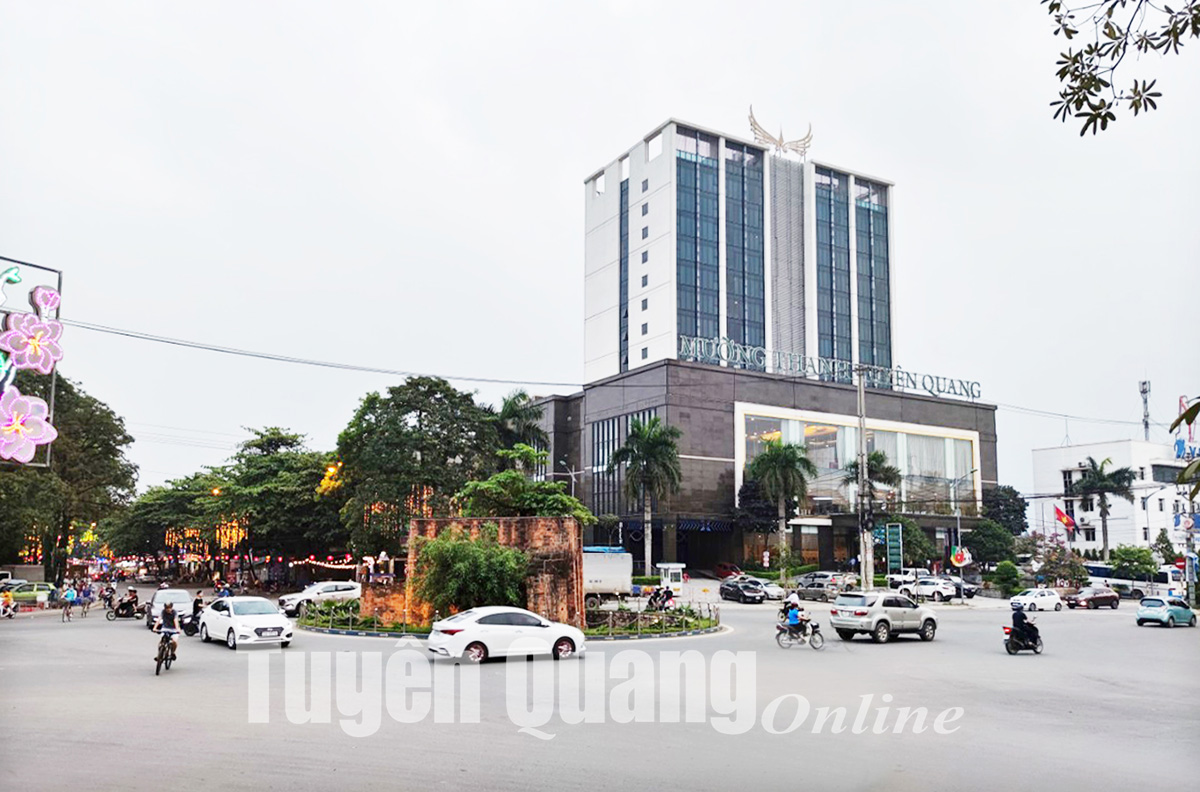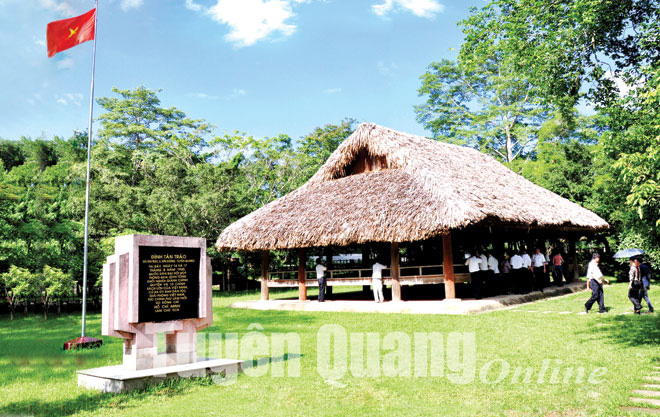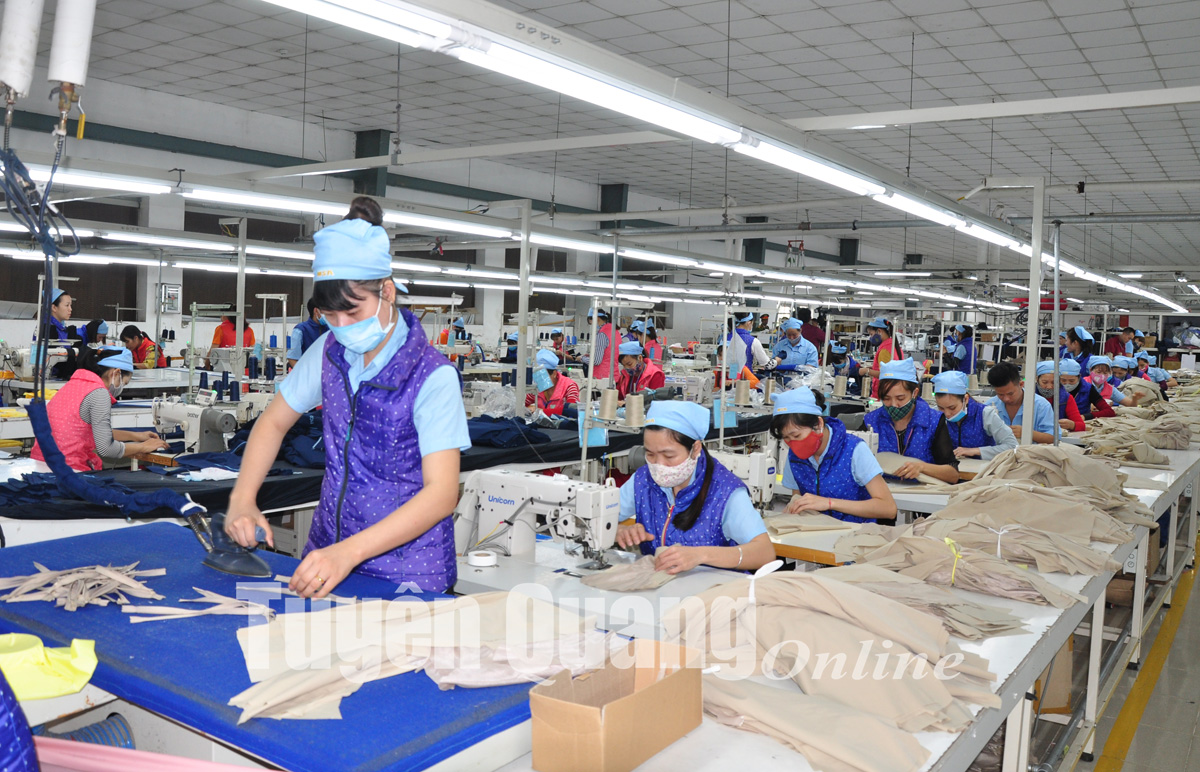Tuyen Quang under historical feudal dynasties
The name of Tuyen Quang firstly appeared under the Tran dynasty. "Dai Viet Su Ki Toan Thu" (Annals of Dai Viet) recorded: "At the end of Thieu Bao reign (the era name of Tran Nhan Tong), Tran Nhat Duat defended the land of Tuyen Quang". In addition, the essay engraved on the Thong Thanh Quan bell in Bach Hac demonstrated that in the end of autumn of 1285, Chieu Van Vuong Tran Nhat Duat defended the land of Tuyen Quang to against invasion from Yuan-Mongolia.

A corner of Tuyen Quang City.
In 1469, all of Vietnam was mapped and divided into 13 "dao thua tuyen" (provinces) by Le Thanh Tong, including Tuyen Quang. Tuyen Quang is bounded by Yunnan, Guangxi (China) to the north, by Cao Bang and Thai Nguyen to the east, by Lao Cai to the west, and by Son Tay and Hung Hoa to the south. Accordingly, Tuyen Quang under Le Thanh Tong reign consisted the land of Tuyen Quang, Ha Giang, Bao Lam and Bao Lac (Cao Bang), Yen Binh, Luc Yen and Tran Yen (Yen Bai) today.
In 1512, Tuyen Quang changed its name to Minh Quang.
At the beginning of Gia Long dynasty (1802), Tuyen Quang was a town of the North citadel (Thang Long citadel). On November 4, 1831, Minh Menh changed Thang Long to Hanoi province and 12 towns to the provinces, including Tuyen Quang. Later, Tuyen Quang's boundary changed, separating the provincial and district units to establish Ha Giang and Yen Bai provinces in 1900.
Since then, Tuyen Quang's boundary has been relatively stable. It only added Son Duong district and founded Yen Son district from Phuc Yen district, and changed Dai Man to Chiem Hoa district, and established Na Hang district from Chiem Hoa district.
Glorious history
Under feudal dynasties and semi-feudal colonization, the economy of Tuyen Quang was mainly agricultural production while the transportation based on natural conditions. Mining activities in the French colonial period formed a large labour force. As a result, The first Communist Party cell of Tuyen Quang was established from revolutionary movement of coal mine workers.

Tan Trao Communal House in Son Duong District.
During the August Revolution, the people of Tuyen Quang contributed to the construction of the Liberation Zone, protecting the safety of the Party Central Committee, Uncle Ho, and the Liberation Army, creating the premise for the victory of the August Revolution and the establishment of Democratic Republic of Vietnam.
During the resistance war against the French colonialists, the people of Tuyen Quang also made an important contribution to fight the autumn-winter attack of 1947, protecting the safety of President Ho Chi Minh, the Central Committee of the Party, the National Assembly, the Government, and central agencies. In the Resistance Capital in Tuyen Quang, the Second National Party Congress (February 1951) and many important events were organised.
In the resistance war against the US, Tuyen Quang people tried to emulate both production and combat, actively providing human and material resources to the front lines of the South and Binh Thuan, contributing to the 1975 Great Spring Victory, the liberation of the South and national unification.
In the 1976 - 1991 period, Ha Tuyen Party Committee and people closely united, passed all difficulties, fought bravely to firmly defend the border of the Fatherland.
Building a civilised and prosperous province
Since the re-establishment of the province, Tuyen Quang have entered a period of development in all aspects. The economic structure has shifted towards increasing the proportion of services and industry, reducing the proportion of agriculture, forestry and fishery. The economy maintains a high growth rate. In 2020, the province's total product reached over VND34,000 billion; per capita income reached nearly VND45 million; budget revenue of more than VND2,300 billion; industrial production scale increased over 220 times compared to 1991, industrial production value reached VND14,395 billion.
The province has accelerated administrative reform and business investment environment, and attracted a large number of big corporations such as Vingroup, Flamingo, Muong Thanh, Dan Ko, and Woodsland Joint Stock Company, creating jobs for local workers and increasing revenue for the province's budget.

Labours working at MSA-YB Co., Ltd. in Long Binh An Urban - Service - Industrial Park.
Agricultural production, strongly changed towards commodity production, added value, and concentrated cultivation region with a total area of over 27,000 hectares, including tea, sugarcane, peanuts, oranges and pomelos. The forest coverage rate is over 65%. Tuyen Quang strives to become a centre developing forestry and wood processing. Currently, there are 47 communes out of 124 communes meeting new rural standards.
Tourism has gradually become an important economic sector of Tuyen Quang. Tourist destinations have been planned for investment and construction, such as My Lam mineral spring tourist area, Tan Trao special national relic site, Kim Binh Special National Monument, and the special national scenic spot Na Hang - Lam Binh. In addition, the province has expanded various types of tourism, including historical tourism, spiritual tourism, and experience tourism, etc.
Tuyen Quang currently has more than 600 historical and cultural relics, including 3 special national relics, 1 national treasure, 8 national level intangible heritages (Pao Dung singing of Dao people, Sing Ca singing of Cao Lan people, Soong Co singing of San Diu people, decorative art on costumes of Dai Ban Dao sub-group, Cap Sac ritual of Dao people, Long Tong festival, the procession of mother goddess ceremony of Lower Temple - Upper Temple - Y La Temple, 'Keo co' (Tug of War) folk game Tug). Then practice in the spiritual life of Tay, Nung and Thai has been added to the UNESCO Representative List of the Intangible Cultural Heritage of Humanity. These intangible cultural heritages have been preserved and promoted in association with tourism development.
Infrastructure construction in the province has promoted with outstanding infrastructure projects such as system of national highways and provincial roads, concrete bridges crossing the Lo River, Gam River, Pho Day River and large streams, concrete roads through communes and villages. Especially, investment project of building Tuyen Quang - Phu Tho expressway connecting with Noi Bai - Lao Cai highway has been started since early 2021.
The training system from preschool to university in the locality has been completed. The rate of hospital beds and doctors has been raised, meeting the needs of patients. The control and prevention of the Covid-19 pandemic has been special paid attention. In the 2016-2020 period, about 20,000 jobs averagely is created each year, the poverty reduction rate decreased to 9.08%.
Recognizing the achievements and creative efforts of the Party Committee, government and people of Tuyen Quang, the Party and the State conferred the noble titles on Tuyen Quang Province, including the Gold Star Order, the Ho Chi Minh Order, the title of 'Hero of People's Armed Forces'.

Comment
Print